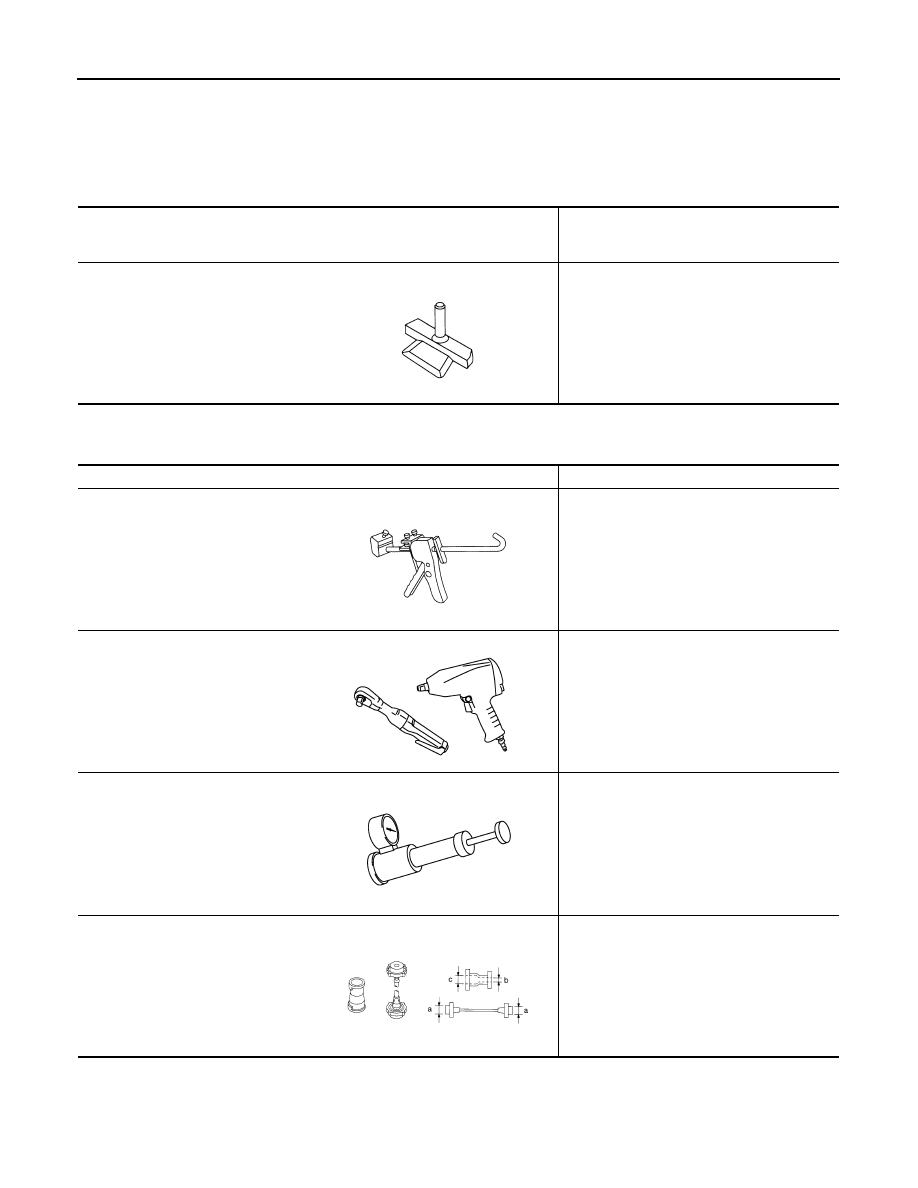Murano Cross Cabriolet Z51 (2013 year). Manual - part 26

CO-4
< PREPARATION >
PREPARATION
PREPARATION
PREPARATION
Special Service Tool
INFOID:0000000008462724
The actual shapes of Kent-Moore tools may differ from those of special service tools illustrated here.
Commercial Service Tools
INFOID:0000000008462725
Tool number
(Kent-Moore No.)
Tool name
Description
KV10111100
(J-37228)
Seal cutter
Removing water pump cover
NT046
Tool name
Description
Tube presser
Pressing the tube of liquid gasket
Power tool
Loosening nuts and bolts
Radiator cap tester
Checking radiator and radiator cap
Radiator cap tester adapter
Adapting radiator cap tester to radiator cap
and radiator pipe (upper) filler neck
a: 28 (1.10) dia.
b: 31.4 (1.236) dia.
c: 41.3 (1.626) dia.
Unit: mm (in)
S-NT052
PBIC0190E
PBIC1982E
S-NT564
Revision: 2012 October
2013 Murano CrossCabriolet